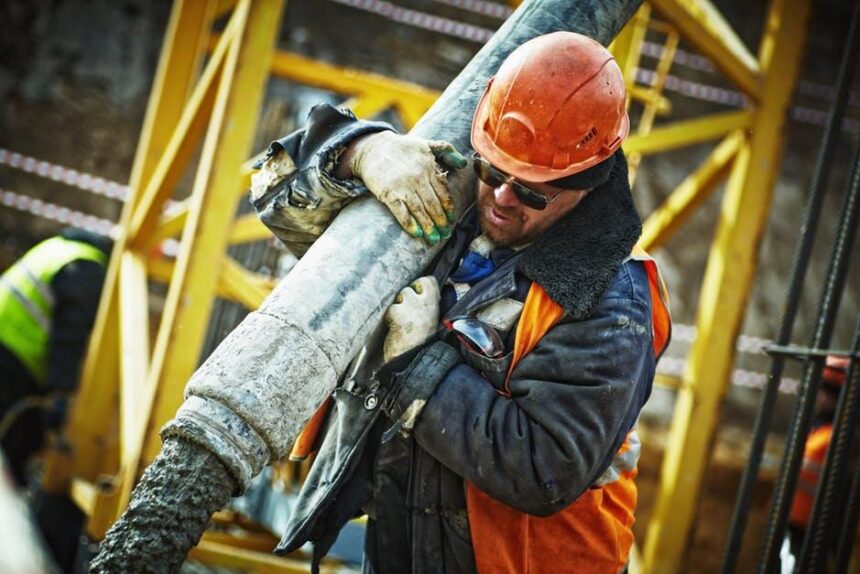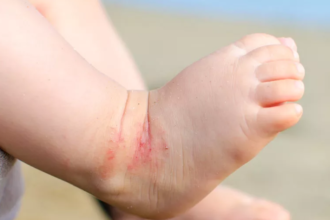Safety is a cornerstone of every construction project. From elevated work surfaces to heavy machinery, construction sites are full of potential hazards that require proactive planning and specialized equipment to prevent injuries. Fall-related accidents, in particular, are a leading cause of workplace incidents, making it essential for workers to have the right tools for safety and efficiency.
In this article, we’ll explore nine essential safety tools, such as self-retracting lines (SRLs), that every construction worker needs to minimize risks, boost productivity, and ensure a safe return home at the end of the day.
1. Personal Protective Equipment
Personal protective equipment (PPE) forms the foundation of workplace safety. Items such as helmets, gloves, goggles, and steel-toed boots protect workers from common hazards like falling debris, chemical splashes, and sharp objects. Proper PPE not only safeguards workers but also ensures compliance with industry regulations.
Investing in high-quality, properly fitted PPE is a straightforward way to reduce workplace injuries. Regular inspections and replacements are critical to maintaining effectiveness, as worn-out equipment can compromise safety.
2. Safety Harnesses
A safety harness is indispensable for construction workers operating at height. Harnesses are designed to evenly distribute the force of a fall, minimizing the risk of injury. Modern full-body harnesses are lightweight, adjustable, and comfortable enough for extended use, making them a staple for roofing, scaffolding, and steelwork tasks.
Incorporating a safety harness into daily operations provides peace of mind for workers and supervisors alike. It ensures compliance with fall protection standards and reduces the likelihood of serious injuries.
3. Self-Retracting Lifelines (SRLs)
Self-retracting lifelines, commonly called SRLs, are another key component of fall protection systems. These devices connect to an anchor point and provide a retractable tether that automatically adjusts to the worker’s movements, eliminating slack and reducing fall distance.
SRLs are particularly useful for jobs that require mobility at height, such as roofing or working on elevated platforms. Their compact design and reliability make them popular among construction professionals, especially for industries that prioritize safety and productivity.
4. Roof Anchors
Roof anchors are critical for securing fall arrest systems in place. Whether permanent or temporary, these devices serve as a secure attachment point for lifelines and harnesses, enabling workers to safely perform tasks on pitched or elevated surfaces.
Proper installation and maintenance of roof anchors are essential to their effectiveness. Construction managers should ensure these systems are inspected regularly and positioned correctly to maximize safety benefits.
5. Tool Tethering Systems
Dropped tools are a significant hazard on construction sites for workers operating at height and those on the ground. Tool tethers are designed to prevent tools from falling, ensuring the safety of everyone on-site while reducing the likelihood of lost or damaged equipment.
Tool tethering systems come in various designs to accommodate different tools, from hammers to power drills. Incorporating these systems into daily operations minimizes the risk of accidents and boosts productivity by preventing delays caused by retrieving or replacing dropped items.
6. Edge Protection Systems
Edge protection systems, such as guardrails and safety netting, provide additional protection for workers operating near edges. These systems are commonly used on rooftops, scaffolding, and open floors to prevent falls without restricting mobility.
Edge protection is particularly valuable when workers must frequently move or carry materials near hazardous areas. By installing these systems, construction managers can significantly reduce the risk of falls and enhance overall site safety.
7. Ladder Safety Devices
Ladders are one of the most frequently used tools on construction sites but are also a common source of workplace injuries. Ladder safety devices, such as ladder stanchion anchors, enhance ladder stability and reduce the risk of tipping or slipping.
Training workers on proper ladder usage, including correct placement and weight distribution, minimizes risks and ensures these devices are used effectively. Combining ladder safety equipment with best practices creates a safer work environment for tasks at any height.
8. Fall Clearance Measurement Tools
Fall clearance measurement tools, such as digital fall clearance calculators, are essential for selecting the right safety equipment and ensuring it performs as intended. These tools help workers calculate the required clearance to safely arrest a fall, factoring in lifeline length, harness stretch, and the anchorage point height.
Using fall clearance measurement tools prevents workers from underestimating the distance needed to avoid hitting lower levels or obstacles during a fall. This proactive approach to roofing fall protection planning is key to minimizing risks in elevated work environments.
9. First Aid and Emergency Kits
No matter how many preventative measures are in place, accidents can still happen. On-site first aid kits equipped with supplies for common injuries, such as cuts, burns, and sprains, allow workers to respond quickly to minor incidents. Emergency kits designed for more serious situations, such as fall-related trauma, can stabilize injured workers until professional medical help arrives.
Having well-stocked and easily accessible first aid kits is a simple yet effective way to prepare for unexpected events and ensure everyone’s safety on the worksite.
The Role of Training in Safety
While having the right tools is critical, proper training is essential to their effectiveness. Workers must understand how to use safety equipment correctly and recognize the importance of maintaining it. Comprehensive training programs that include hands-on demonstrations, such as how to use an SRL or inspect tool tethers, enhance worker confidence and competence.
Regular refresher courses ensure workers remain informed about the latest safety protocols and equipment advancements. This ongoing education is crucial for maintaining a culture of safety and ensuring tools are used to their full potential.
Promoting Accountability on the Job Site
Safety isn’t just the responsibility of supervisors or safety managers; it’s a shared effort. Encouraging workers to look out for one another and report unsafe conditions fosters a culture of accountability. Peer reinforcement can help identify issues, such as improperly installed roof anchors or damaged PPE, that may go unnoticed by management.
Construction companies can create a safer and more supportive work environment by promoting teamwork and open communication. A shared commitment to safety benefits everyone, from individual workers to the organization as a whole.
Final Thoughts: Equipping for Safety and Success
Safety is non-negotiable on construction sites, and equipping workers with the right tools is the first step toward creating a secure work environment. Each tool plays a vital role in protecting workers and enhancing productivity, from safety harnesses and SRLs to tool tethering systems and first aid kits.
By investing in high-quality equipment, providing comprehensive training, and fostering a culture of accountability, construction companies can reduce risks, improve efficiency, and ensure every worker returns home safely. Prioritizing safety isn’t just good practice—it’s a commitment to the well-being and success of everyone on the job site.















